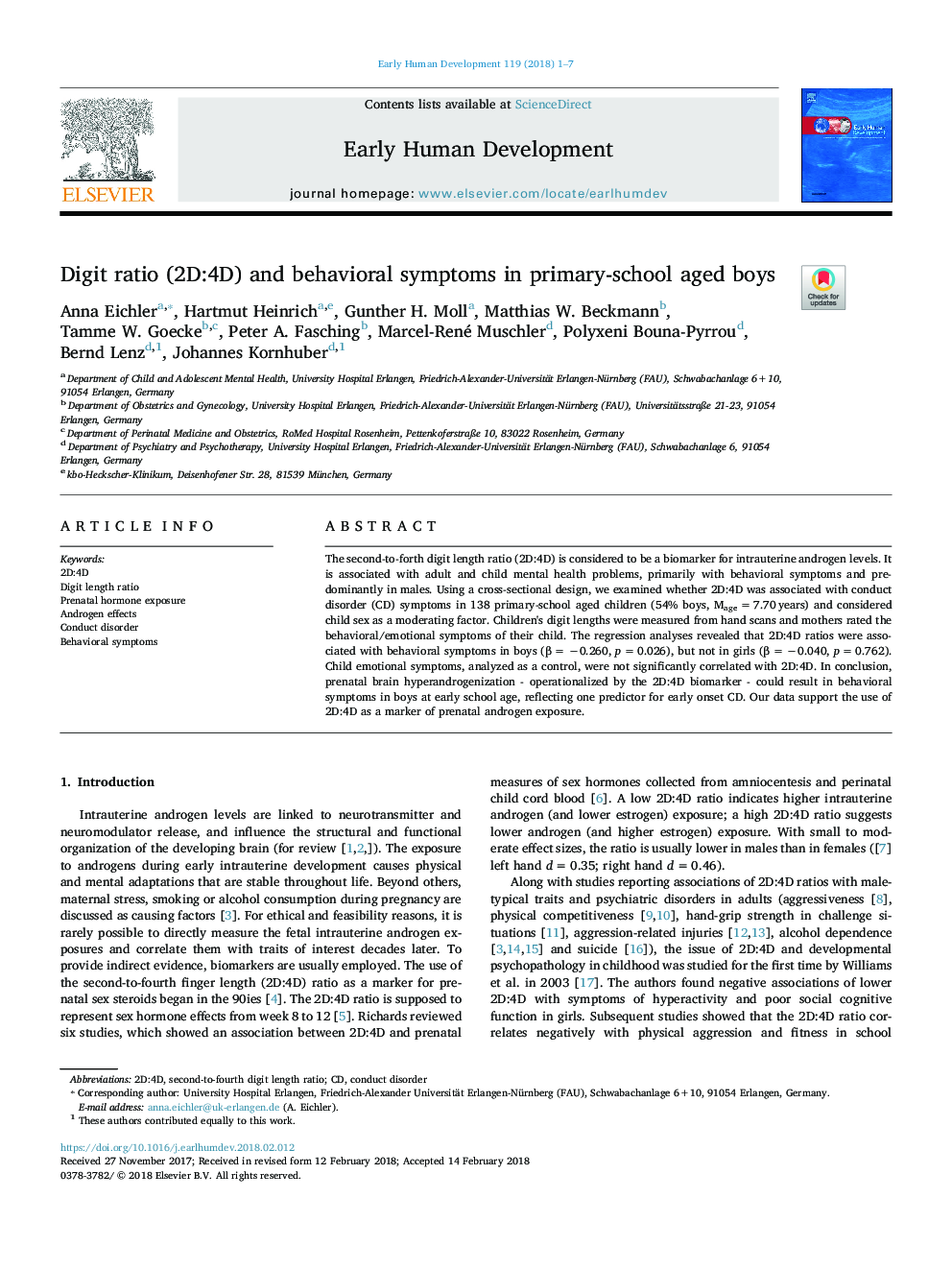| کد مقاله | کد نشریه | سال انتشار | مقاله انگلیسی | نسخه تمام متن |
|---|---|---|---|---|
| 8777669 | 1599448 | 2018 | 7 صفحه PDF | دانلود رایگان |
عنوان انگلیسی مقاله ISI
Digit ratio (2D:4D) and behavioral symptoms in primary-school aged boys
دانلود مقاله + سفارش ترجمه
دانلود مقاله ISI انگلیسی
رایگان برای ایرانیان
کلمات کلیدی
موضوعات مرتبط
علوم پزشکی و سلامت
پزشکی و دندانپزشکی
زنان، زایمان و بهداشت زنان
پیش نمایش صفحه اول مقاله

چکیده انگلیسی
The second-to-forth digit length ratio (2D:4D) is considered to be a biomarker for intrauterine androgen levels. It is associated with adult and child mental health problems, primarily with behavioral symptoms and predominantly in males. Using a cross-sectional design, we examined whether 2D:4D was associated with conduct disorder (CD) symptoms in 138 primary-school aged children (54% boys, Mageâ¯=â¯7.70â¯years) and considered child sex as a moderating factor. Children's digit lengths were measured from hand scans and mothers rated the behavioral/emotional symptoms of their child. The regression analyses revealed that 2D:4D ratios were associated with behavioral symptoms in boys (βâ¯=â¯â0.260, pâ¯=â¯0.026), but not in girls (βâ¯=â¯â0.040, pâ¯=â¯0.762). Child emotional symptoms, analyzed as a control, were not significantly correlated with 2D:4D. In conclusion, prenatal brain hyperandrogenization - operationalized by the 2D:4D biomarker - could result in behavioral symptoms in boys at early school age, reflecting one predictor for early onset CD. Our data support the use of 2D:4D as a marker of prenatal androgen exposure.
ناشر
Database: Elsevier - ScienceDirect (ساینس دایرکت)
Journal: Early Human Development - Volume 119, April 2018, Pages 1-7
Journal: Early Human Development - Volume 119, April 2018, Pages 1-7
نویسندگان
Anna Eichler, Hartmut Heinrich, Gunther H. Moll, Matthias W. Beckmann, Tamme W. Goecke, Peter A. Fasching, Marcel-René Muschler, Polyxeni Bouna-Pyrrou, Bernd Lenz, Johannes Kornhuber,